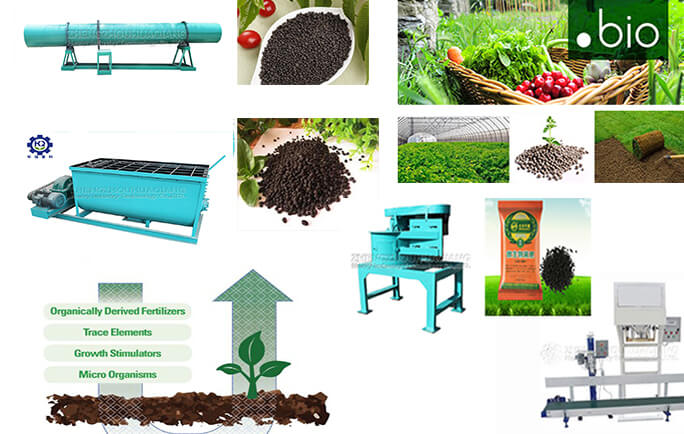Processing organic fertilizers using organic fertilizer production lines
The application of traditional organic fertilizer has a long history. So far, it is still the main method of applying base fertilizer in most orchards in autumn and winter. In production, composting, chicken manure, cow manure, pig manure, sheep manure and other livestock and poultry manure and human manure are commonly used in production. Wait. In the fertilizer production process, any raw material can be used for fertilizer production.

Among them, sheep manure is a natural green fertilizer, containing 4% to 27% organic matter, which is more than other livestock manures. It is rich in nitrogen, phosphorus, and potassium nutrients. The manure is finer and rich in fertilizer. It is a thermal fertilizer. Chicken manure is rich in nutrients, especially the crude protein in chicken manure, the organic matter content reaches 25.5%, and it can become a better green organic fertilizer through proper processing and utilization. Pig manure contains 15% organic matter, the total nutrient content is not high, the carbon and nitrogen are relatively small (14:1), it is easier to be decomposed by microorganisms, and release nutrients that can be absorbed by crops. The organic matter content of cow dung is 14.5%. The air-dried sample contains 43.6% of crude fiber, and the three elements of nitrogen, phosphorus and potassium are close to 1%. According to different materials, the choice of organic fertilizer granulator is also different.
Due to the large amount of traditional organic fertilizer per acre, deep digging and deep burial are required when applying, and the labor intensity is high, which seriously affects the enthusiasm of fruit farmers to apply basic fertilizer in autumn and supplement soil organic matter. Coupled with the current aging of the orchard production staff, the application of traditional organic fertilizer has been greatly challenged, which has affected the sustainable production of the orchard.
.jpg)

.jpg)
.jpg)
.jpg)
.jpg)
.jpg)

.jpg)